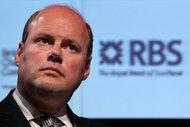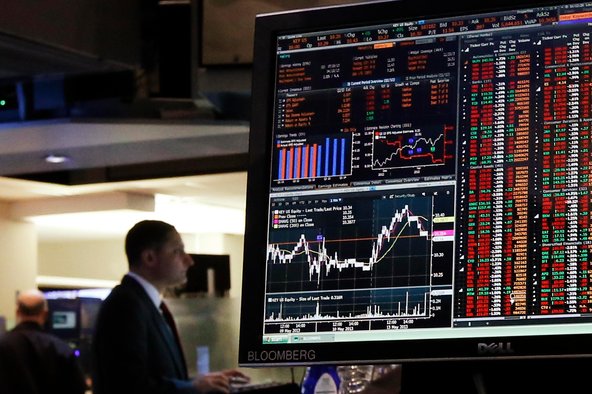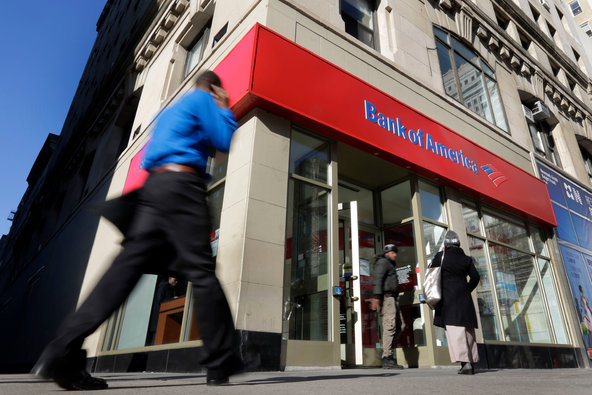The temptation is not to take Wall Street’s truculence too seriously and treat it as an inevitable, but passing, reaction to a world with less easy money.
But if stocks and bonds keep declining, doubts about the Fed’s withdrawal could deepen, leading to a situation in which even the real economy suffers.
In a pivotal communication, the Fed on Wednesday clearly laid out the steps it would take to reduce the extraordinary stimulus it has injected into the financial system and economy since the financial crisis of 2008. It stressed it would withdraw its support only if the economy were strong enough. The Fed’s chairman, Ben S. Bernanke, sounding not unlike a soothing parent, even said the central bank would reverse course if it mistakenly pared back too soon.
Such placating words hardly satisfied investors. The benchmark Standard Poor’s 500-stock index dropped 2.5 percent on Thursday, its steepest one-day decline since November 2011, and ended the week down 2.1 percent. The 10-year Treasury bond also plunged in price, which pushed up its yield to 2.54 percent at the end of the week, capping a sharp run-up over the last month.
Wall Street finds itself in an uncomfortable place. Perhaps more than at any time since the crisis, it knows it must prepare for a world without the Fed’s largess, one that is also facing uncertainty about tightening credit in China and continuing debt woes in Europe. Of course, stocks and bonds were always going to sell off when it became evident that the Fed was changing course.
In the past, markets have panicked initially when investors anticipated a tightening of interest rate policy by the central bank. Prices soon recovered as investors realized a stingier central bank need not spell doom. In 1994, investors sold off in the face of a toughening of Fed policy, but stocks recovered and rallied in the next years. To the optimists, the week’s instability may have merely been the market wobbling as it tried to stand on its own two feet again.
“I think it’s very fair to describe what’s going on in the markets as very normal,” said David Bianco, an equities strategist at Deutsche Bank. “Normal for when there are big changes in interest rate policies.”
Though talk about withdrawing support unnerved some investors, it may turn out to be a necessary step to build further confidence, Mr. Bianco said. After several years of Fed support, investors are not quite sure whether the searing rally in stock prices since 2009 is entirely genuine. But if stocks recover now and keep climbing, the jibes that the markets are riding on a “sugar high” could lose credibility.
Stocks are vulnerable to a tightening of Fed policy when they are overvalued. But the corporations in the S. P. 500 are reporting historically strong profits.
“The second quarter is still estimated to be an all-time record,” said Howard Silverblatt, a senior analyst at Standard Poor’s. And because of those strong earnings, stocks do not look overvalued, he said. The companies in the S. P. 500 have a stock market value that is 15 times as large as their expected combined earnings for this year. That multiple is well below the 19 times that is the average for the last 25 years, Mr. Silverblatt said.
As strong as earnings might look, the stock market reacts negatively to any hint that profits may fall below expectations.
Stocks did recover a bit on Friday, with the S. P. 500 rising 4.24 points, or 0.3 percent, to 1,592.43, and the Dow Jones industrial average climbing 41.08 points, or 0.3 percent, to 14,799.40. But it is highly unlikely that the markets have seen the last of extreme volatility. The sell-off in the bond market has caused interest rates to rise, which could depress economic activity and weigh on corporate profits. Weakness in foreign economies could also take a toll on earnings. Seeing that coming, investors might very well dump stocks.
It is these crosswinds that have convinced some people that the Fed should have waited to talk about an exit until the economic signals at home and abroad looked stronger.
James B. Bullard, president of the Federal Reserve Bank of St. Louis, who is on the Fed committee that shapes monetary policy, dissented to the Fed’s statement on Wednesday and registered his disagreement with some of the committee’s decisions. On Friday, the St. Louis Fed took the somewhat unusual step of explaining his opposition at length in a news release, saying that Mr. Bullard thought the economy was not yet strong enough to start a stimulus withdrawal. That view is widely shared on Wall Street.
“Bullard is saying it’s important to look at economic conditions now — and they are fairly weak,” said Kenneth B. Petersen, a portfolio manager at Laffer Investments.
One area of the economy that investors will be following closely is housing. The Fed’s policies led to historically low mortgage rates, and a revival in house prices. But a rapid reversal in rates has taken place. House prices still look affordable on a historical basis, so the higher cost of borrowing may not hurt too much, said Michael Cudzil, a portfolio manager at Pimco. But he added, “This will create a little more of a headwind for the economy.”
Despite the Fed’s efforts to reassure the markets, it is still essentially leaving them to comfort themselves. And as with any unsteady recovery, the risk remains of a tumble or two before footing can be fully regained.

Article source: http://www.nytimes.com/2013/06/22/business/economy/a-fit-of-pique-on-wall-street.html?partner=rss&emc=rss



